
Perennial Forbs Around Las Vegas, Vegetation Around Las Vegas
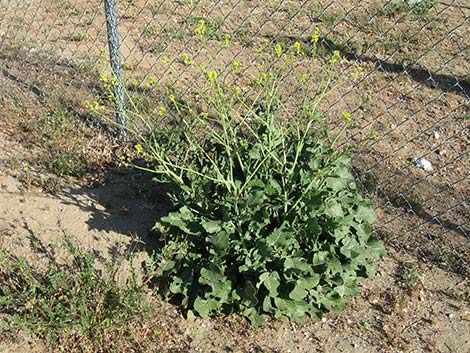 |
General: Shortpod Mustard (Hirschfeldia incana) is an invasive perennial forb that grows from a basal rosette to form a mound of leaves with many, upright branching stems. The basal leaves are always compound, but variable in the details; the terminal leaflet is always largest. Flowers grow atop seemingly ever-growing stalks that even after the leaves are dead and gone, continue to produce flowers. Fruits are short, narrow seedpods held closely against the stems. Shortpod Mustard is a common component of vegetation communities in disturbed areas. Around Las Vegas, look for this species all over southern California and increasingly in southern Nevada. Family: Mustard (Brassicaceae). Other Names: Mediterranean mustard, Buchanweed, Brassica geniculata, Brassica incana, Sinapis incana. |
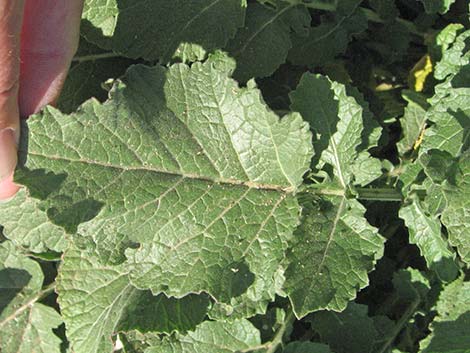 |
Plant Form: Leafy mound that dies back to elongate stems with a few flowers at the tip. Height: To 3-4 ft. Stems: Branched from the base; each branch branches repeatedly. Leaves: Starts with basal rosette. Lower leaves elliptical, pinnately lobed with one large lobe at the end and several short lobes near the base; simple, not clasping stem. Cauline leaves sessile, simple, not clasping stem. Leaves covered with many hairs, especially on the underside. |
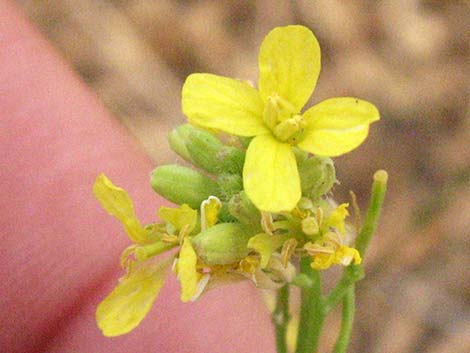 |
Flowers: Blooms during spring and summer. Inflorescence: Narrow raceme that becomes very long as the flowering stems continue to grow and produce flowers at the tip. Flowers: yellow, four petals. Seeds: Fruit: seed pod, elongate, thin, to about 1/2 inch. Seeds: many, brown Habitat: Disturbed soils. |
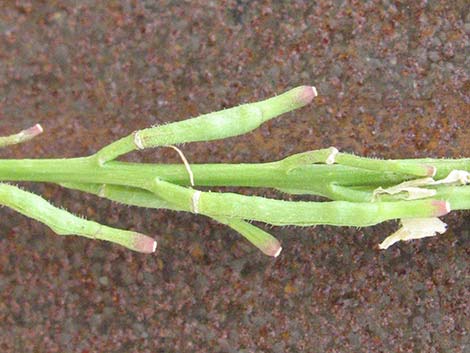 |
Elevation: About 4,500 feet. Distribution: California, Oregon, and Nevada. Comments: This species is invasive in the US. It is native to the Mediterranean region, but it occurs worldwide as an exotic species or noxious weed. |
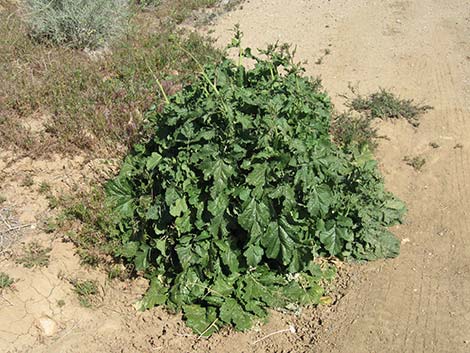 |
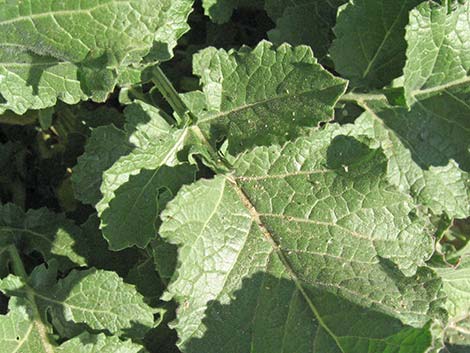 |
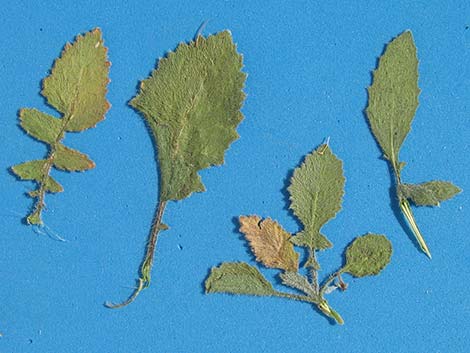 |
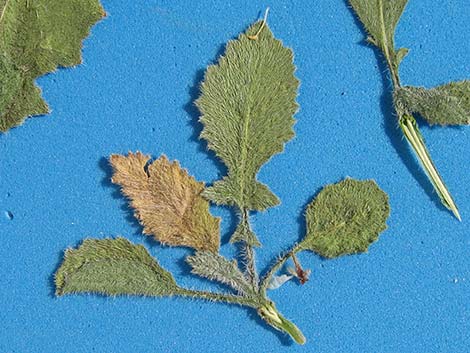 |
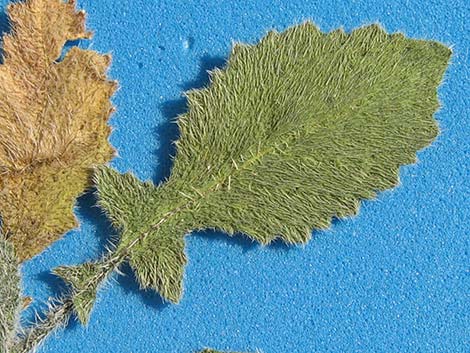 |
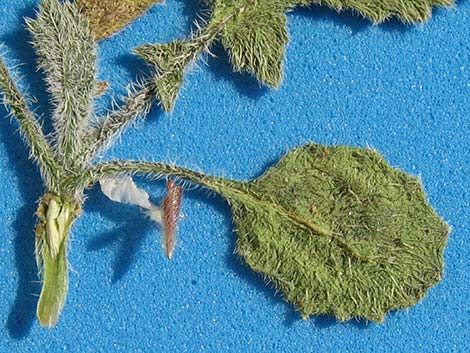 |
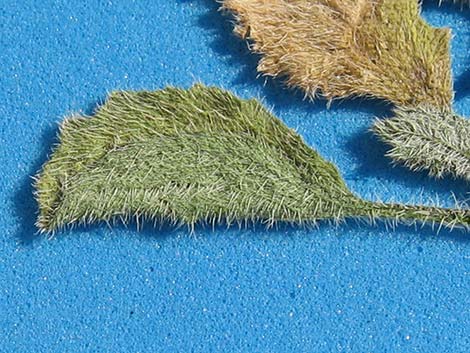 |
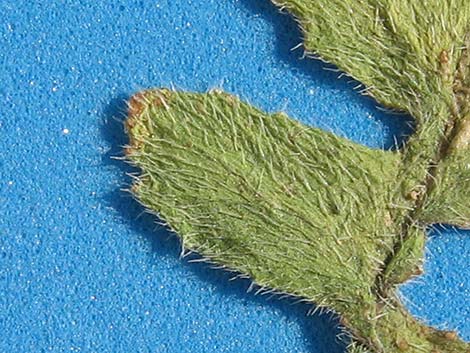 |
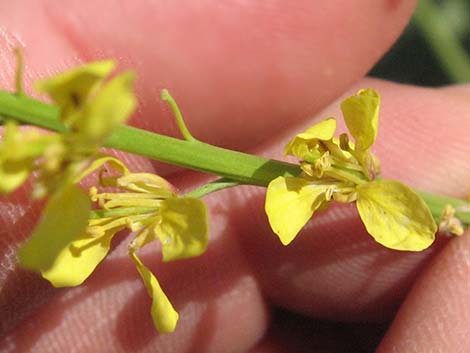 |
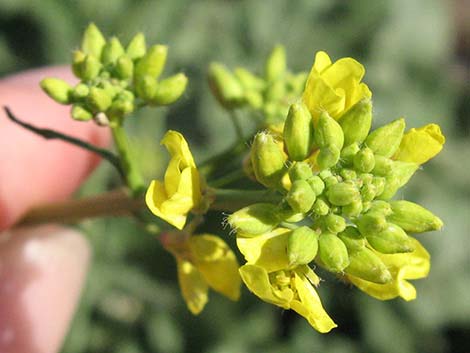 |
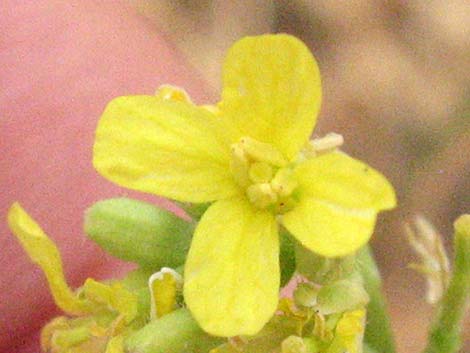 |
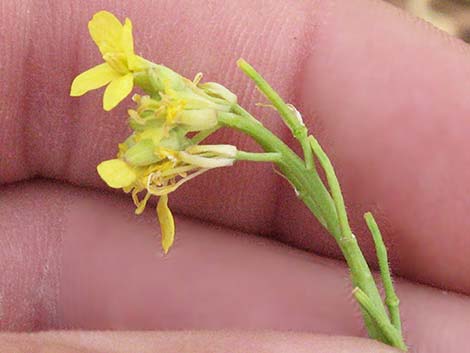 |
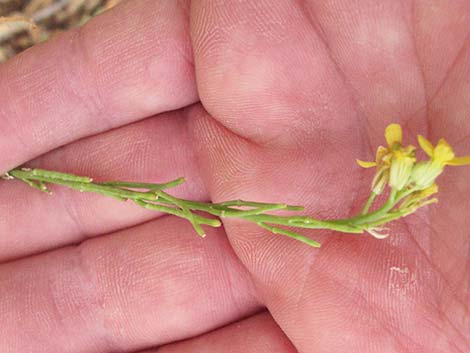 |
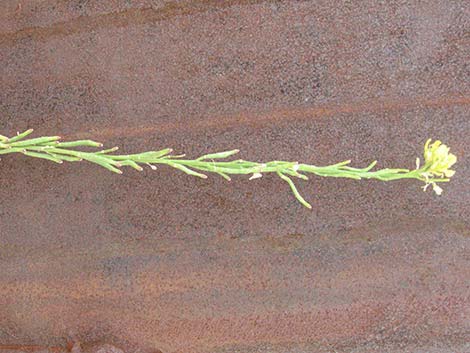 |
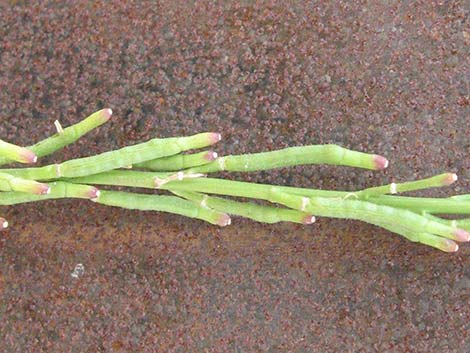 |
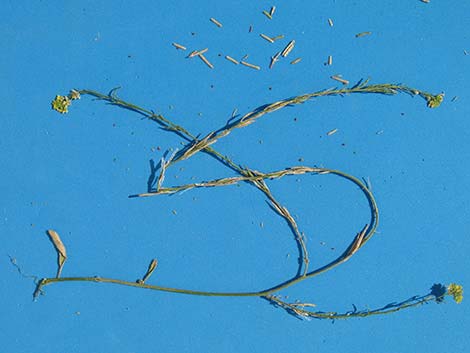 |
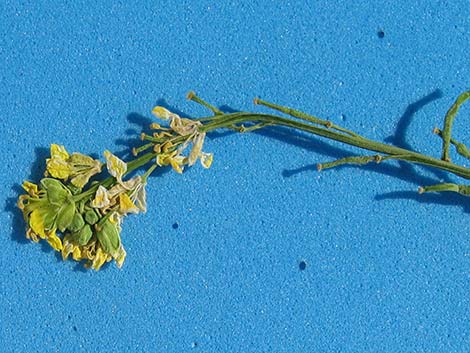 |
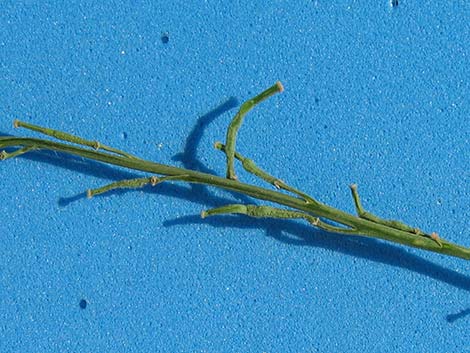 |
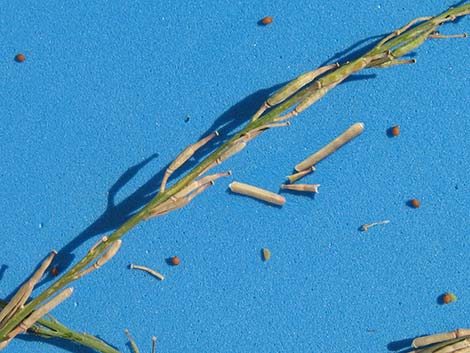 |
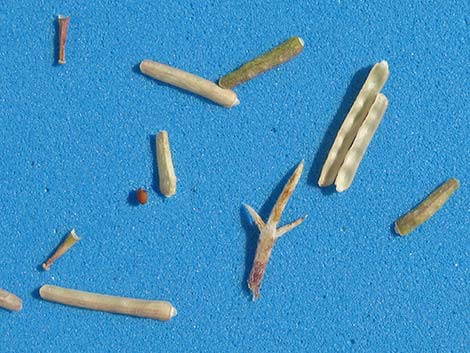 |
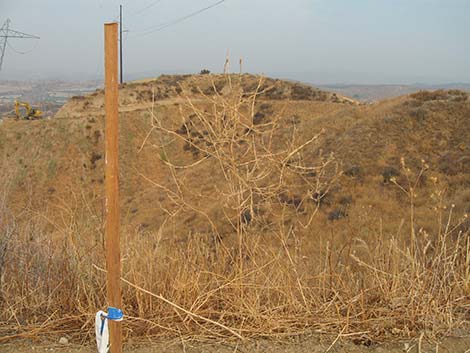 |
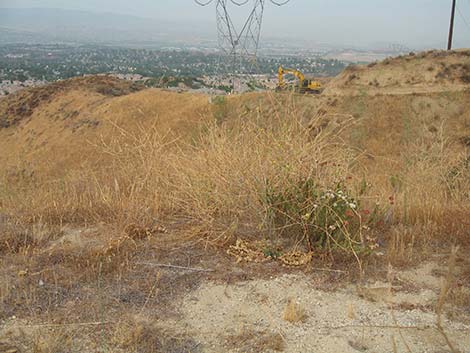 |
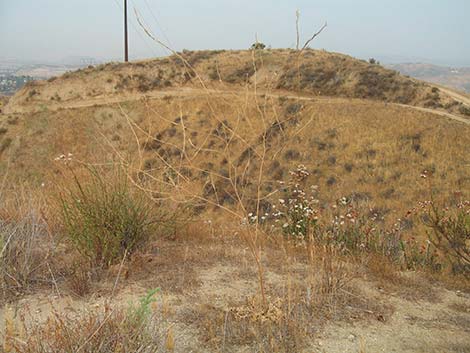 |
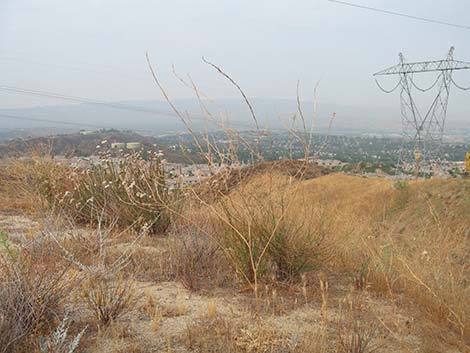 |
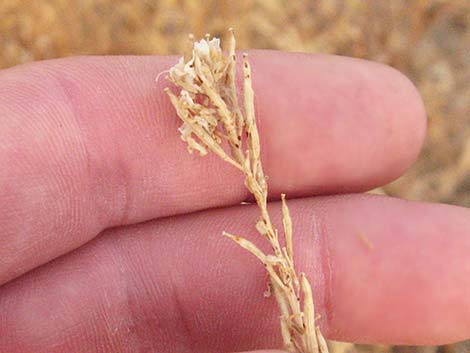 |
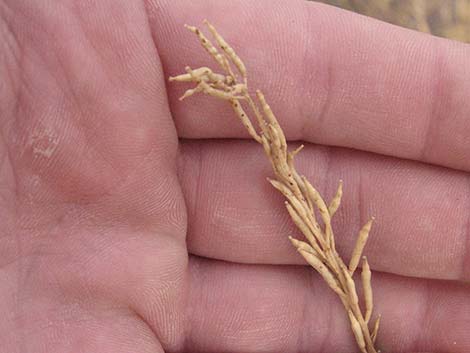 |
Note: All distances, elevations, and other facts are approximate. Names generally follow the USDA database.
![]() ; Last updated 211228
; Last updated 211228
| All Perennial Forbs | Plant Species Index | Glossary | Copyright, Conditions, Disclaimer | Home |